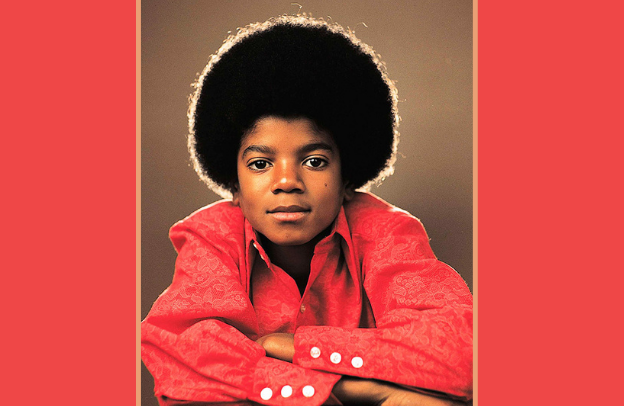The Life and Legacy of Michael Jackson: Insights for African Diaspora Creative Entrepreneurs

In the world of music, few figures have left a mark as lasting as Michael Jackson. His journey—from a young boy in Gary, Indiana, to the King of Pop—was shaped by challenges, triumphs, and a relentless drive to redefine what was possible. For creative entrepreneurs, Jackson’s life offers powerful lessons on identity, success, and overcoming adversity.
Want to learn more about storytelling? Start by downloading the first chapter of The Storytelling Mastery.
This article will delve into his legacy, drawing insights that can inspire and guide you as you navigate your own path in the creative industry.
The Early Years: Foundations of a Legend
Michael Joseph Jackson was born on August 29, 1958, into a family that would ultimately shape the landscape of American music. The Jacksons were no ordinary family; they were a powerhouse of talent.
At the tender age of six, Michael joined his brothers in what would become The Jackson Five, a group that quickly gained traction on the Motown label. Their blend of infectious melodies and dynamic performances captivated audiences, and by 1968, hits like “I Want You Back” and “ABC” solidified their status as musical icons.
However, beneath the glittering facade of success lay a troubled childhood. Michael’s father, Joseph Jackson, was an authoritarian figure who imposed rigorous discipline and harsh treatment on his children.
This legacy of abuse left deep emotional scars on Michael, influencing both his artistry and personal life. As you reflect on your own beginnings, consider how your upbringing and experiences have shaped your creative journey.
In her article, The Boy Who Would Be King for Vanity Fair, Lisa Robinson recalls a moment from February 23, 1988, when she visited Michael Jackson at the Westin Crown Center Hotel in Kansas City. It was the opening night of his Bad tour, and his manager, Frank DiLeo, had arranged the meeting.
What made this visit unusual was the absence of any entourage—no bodyguards, no handlers, no family members. Michael had personally requested to see her, as they’d shared a friendly journalist-artist relationship for 16 years.
The hotel suite was expansive—almost like a small apartment—but when Robinson arrived, Michael was nowhere in sight. She was greeted by a security guard, who let her in, and as she wandered around, she called out for him. “Michael?” she asked, but only silence greeted her. After a few minutes, she heard giggling from behind a door.
When Michael finally emerged, he was dressed in black trousers and a bright red shirt, his hair loosely tied in a ponytail, with a few strands falling over his face.
He was taller than she remembered, taller than he appeared in photos, and when he hugged her, the embrace felt more like a greeting from a grown man than the boyish figure he often projected in the media. It was strong, but not in a sexual way—just the warm, firm hug of someone comfortable in his own skin.
As they pulled apart, Michael looked at her and, in a voice that was deeper and more “normal” than the high-pitched one he sometimes used, asked, “What’s that smell? What’s that perfume?
I know that smell.” Robinson laughed and replied, “Oh, Michael, you don’t know this perfume. It’s an old drag queen scent from the 1950s.” At the mention of “drag queen,” Michael burst into uncontrollable laughter. “Drag queen… hahahahahaha!” he repeated, clearly delighted by the idea.
Michael must have been a very kind and lovely person to be around. Now, let’s go back to the story.
Transition to Solo Stardom: Breaking New Ground
By the late 1970s, Michael Jackson was ready to break free from the constraints of his family group. With the help of renowned producer, Quincy Jones, he launched his solo career with the groundbreaking album Off the Wall.
Released in 1979, the album became a commercial success, selling over 20 million copies worldwide and securing Jackson the highest royalty rate in the music industry—37% of album profits.
What makes Jackson’s transition noteworthy is not just the financial success but the innovative spirit he brought to his work. Jackson understood the importance of storytelling and visual artistry, elements that were often sidelined in music production.
He recognized that to truly connect with audiences, he needed to create a multi-faceted experience. As a creative entrepreneur, you too must think beyond your primary medium.
See also Awakened With New Beats: How Mr Eazi And Other African Artists Are Redefining The Creative Economy
Whether you’re an artist, filmmaker, or entrepreneur, consider how you can incorporate diverse forms of expression into your work. This holistic approach can distinguish you in a crowded marketplace.
The Cultural Phenomenon of “Thriller”
The release of Thriller in 1982 catapulted Jackson to unprecedented heights. With over 110 million copies sold globally, it remains the best-selling album of all time. The music videos accompanying the album, especially the iconic short film for the title track, revolutionized the music video genre.
Jackson might have been a shy person but his meticulous attention to choreography and storytelling turned music videos into essential marketing tools for artists.
Jackson’s performance on Motown 25 in 1983, where he introduced the world to the Moonwalk, became a defining moment in pop culture. His ability to fuse music, dance, and visual elements into a cohesive experience made him not just a musician, but a global icon.
For African diaspora creative entrepreneurs, Jackson’s approach underscores the importance of cultural representation and innovation in your work. The African diaspora is rich with stories, traditions, and artistic expressions that deserve to be highlighted.
According to a report from the United Nations, the African diaspora contributes over $165 billion annually to the global economy, with creative industries emerging as a significant sector. Harnessing your unique cultural narrative can create a powerful brand that resonates deeply with audiences.
Navigating Fame: The Price of Success
As Jackson’s star rose, so did the scrutiny of his personal life. The media became obsessed with his appearance and lifestyle, often misrepresenting his journey. Jackson underwent several cosmetic surgeries and experienced a skin condition called vitiligo, which caused patches of skin to lose pigment.
The speculative nature of the press not only affected his mental health but also reinforced damaging stereotypes about race and identity.
This relentless attention often forced Jackson into seclusion, exemplified by his retreat to the Neverland Ranch. Here, he attempted to create a sanctuary, a place where he could reclaim his childhood amidst the chaos of fame.
In addressing the complexities of fame and identity, consider how external perceptions shape your own narrative. In a world where social media can amplify both your successes and failures, it’s crucial to maintain a strong sense of self and purpose.
As a creative entrepreneur, the challenge lies in balancing public perception with personal authenticity. How you present yourself and your work can often be influenced by societal expectations.
Embrace your unique identity, even when it feels vulnerable, and use it as a source of strength in your creative endeavors.
Philanthropy and Social Responsibility
Beyond music, Michael Jackson was committed to philanthropy, using his platform to advocate for various causes. He supported charities focused on HIV/AIDS awareness, children’s welfare, and disaster relief.
Notably, he co-wrote “We Are the World” in 1985, which raised millions for humanitarian efforts. His dedication to social causes highlights the importance of giving back to the community, a value that resonates deeply within the African diaspora.
See also The Rise of Afrobeat Music: From Africa’s Heartbeat to Global Phenomenon
According to a report by the Brookings Institution, African Americans are more likely to engage in philanthropy than any other racial group, with 63% of African Americans donating to charity each year.
This demonstrates a rich tradition of community support that you can incorporate into your entrepreneurial journey.
Consider how your work can contribute to social change or uplift your community. By intertwining your creative pursuits with social responsibility, you can create a lasting impact.
Lessons for Creative Entrepreneurs
Creative entrepreneurship is the process of combining innovation, artistic talent, and business acumen to create and sustain a venture that is both culturally and commercially successful.
It involves using creativity to develop unique products, services, or experiences while navigating the challenges of running a business—such as marketing, financing, and scaling.
Creative entrepreneurs often operate in industries like fashion, music, film, design, and the arts, blending their passion with strategic thinking to build ventures that resonate with audiences and generate economic value. Now, here are some lessons you can take away from Michael Jackson’s story as a creative entrepreneur:
Embrace Your Individuality
Michael Jackson’s journey emphasizes the significance of embracing your individuality. Despite the pressures of conformity, he remained true to his artistic vision, often pioneering new trends in music and dance.
As a creative entrepreneur, recognize that your unique perspective is your greatest asset.
Engage with your cultural heritage, drawing inspiration from your background and experiences. By doing so, you not only create authentic work but also contribute to the rich tapestry of the African diaspora.
Cultivate Resilience
Jackson faced numerous challenges throughout his career, from personal struggles to public scrutiny. His ability to persevere in the face of adversity offers a powerful lesson in resilience.
The creative industries can be fraught with obstacles, but learning to navigate these challenges is essential for growth.
See also The Resilience and Legacy of Negro League Baseball: A Story of Struggle and Triumph
Develop a support network of mentors and peers who understand your journey. Engaging with other creatives within the African diaspora can provide you with invaluable insights and encouragement, helping you to overcome hurdles along the way.
Build a Legacy
Michael Jackson’s legacy extends far beyond his music; it serves as a reminder of the power of influence and the responsibility that comes with it. As a creative entrepreneur, consider the legacy you want to leave behind.
Focus on creating work that resonates with your values and serves a greater purpose.
See also Activism And Resilience in African American Society: Lessons From Wendell Pierce’s Journey
According to the African American Cultural Heritage Facility, art has the power to inspire change and foster community, so aim to contribute positively to society through your endeavors.
Conclusion: A Call To The Right Action
Michael Jackson’s life is a compelling narrative that intertwines creativity, resilience, and social responsibility. As you navigate your own path as an African diaspora creative entrepreneur, let his legacy serve as a guide.
Embrace your individuality, cultivate resilience, and build a meaningful legacy that reflects your values and cultural heritage. The challenges may be great, but so too are the opportunities to make a lasting impact.
Your journey is not just about personal success; it is about contributing to the rich narrative of the African diaspora, inspiring others, and shaping the future of creative industries.
Want to learn more about storytelling? Start by downloading the first chapter of The Storytelling Mastery.






